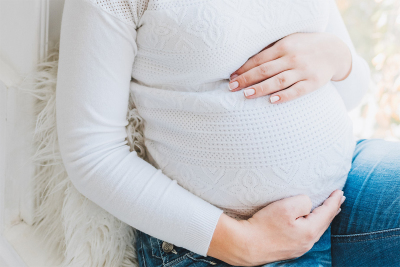The Pope, the prime minister and the elephant in the room

“More children, less pets” was the catchy takeaway in worldwide coverage of Pope Francis’ joining Italian Prime Minister Giorgia Meloni on stage May 12, during a conference on Italy’s collapsing birthrates held near the Vatican.
The pope’s story about his tragicomic encounter with a fiftyish woman who wanted him to bless her “baby” — a dog — certainly colorfully drove home his warnings about the misplaced, upside-down personal priorities among many modern Italians that are contributing to their looming “demographic winter.” Francis has made similar remarks about prioritizing “pets over children” in the past.
There were lots of people, lights and cameras at this remarkable joint presentation — journalists, policy wonks, activists, clerics and politicians aplenty. So, how did they miss that humongous elephant in the room? That elephant being “the decline of natural marriage.”
Running heavily on a conservative, pro-family platform, Giorgia Meloni has advanced proposals to increase Italian births such as tax cuts, free childcare, higher employment rates and stability, financial incentives for having children, and the like. Although the prime minister and the pope appear to disagree on whether the recent surge of illegal immigrants is also a threat to Italy’s ethnic identity, they do seem to be in agreement on much of her pro-birth agenda.
They are certainly sympatico in their deep antipathy to such practices as surrogacy and same-sex parenting, as well as in their opposition to gender ideology. So, why ignore steeply declining Italian marriage rates, a baseline factor which, if not turned around, will render moot all these lesser efforts to resuscitate Italy’s moribund fertility?
For Meloni, at least, sidestepping the marriage issue is probably at least partially personal. She and her partner, Andrea Giambruno, have one daughter together. Despite her very public conservative Roman Catholicism, they are not married. In fact, Meloni has strongly criticized as “nonsense” suggestions that her cohabitation arrangement is at odds with her professed Christian and pro-family values.
Yet, as much as she wishes to deflect the obvious, her lifestyle choice — to have just one child, a live-in partner but no marriage — is pretty typical for Italians these days. This is something that a political leader given a historic opportunity to help raise her nation’s abysmal birth rates should kindly but firmly challenge — not personally practice and publicly defend. The increasing abandonment of marriage is a major factor behind declining fertility in modern, developed countries, and this includes Italy.
We have known about the powerful ties between marriage and fertility for a long time. A key element of this is age at matrimony — marrying early enough for a husband and wife to realistically have more children. This has not prevented many who ought to know better from claiming that, in modern societies, marriage is no longer relevant to birth rates. Nonmarital fertility, they say, can create sustainable levels of childbearing so long as having and raising children out of wedlock is culturally accepted and supported by the State.
Most politicians and policy wonks seem to believe, like Prime Minister Meloni, that nations facing demographic winter can promote fertility without also reviving marriage, including discouraging people who do eventually marry from unnecessarily delaying it. They are wrong.
In fact, a devastating report authored by Lyman Stone and Spencer James, released just this past October by the Institute for Family Studies, rigorously and thoroughly documents this. Entitled “Marriage Still Matters: Demonstrating the Link Between Marriage and Fertility in the 21st Century,” it uses hard data to demonstrate that in high-income modern nations, in European and Pacific Rim nations as well as in the United States, the statistical relationship between marriage and childbearing is robust.
This association stands up when researchers control for other explanatory factors. Moreover, as the authors stress, there are no realistic ways that societies can use nonmarital fertility to compensate for the decline of births associated with plummeting marriage rates and rising ages at first marriage.
To be sure, this causal relationship, say Stone and James, goes both ways. Marriage promotes childbirth. Having children, or even desiring to have children, encourages people to marry. Marriage and fertility are strongly intertwined and mutually reinforcing. Yes, it is still important to have policies that encourage married people to have more children. In some countries, including much of east Asia, low marital fertility is a serious problem. But simply trying to dramatically increase fertility without also promoting marriage? This is a pipe dream.
Are there exceptions where, for example, delayed or less marriage combined with generous welfare and unusually stable long-term cohabiting unions can be associated with higher fertility in modern nations? Or where earlier marriage and higher marital rates are associated with developed countries that have low fertility? Of course. But there are specific reasons for these exceptions which most countries, including Italy, cannot count on. And they still do not give us fertility high enough to reverse years, even decades, of abysmally low birth rates. As Stone and James point out, “while it might be possible that in some extremely unusual and impossible-to-replicate circumstances, the marriage-fertility linkage can be temporarily suspended, reasoning from these very narrow cases to the whole world is unjustified.”
Italy is a textbook case in the marriage-childbirth linkages documented so expertly by these authors.
As late as 1968, the Italian fertility rate, that is, estimated lifetime births per woman, was 2.5 — well over the 2.1 replacement level for modern nations. Then the bottom dropped out. Just 30 years later, it was down to a devastatingly low 1.22. The fertility rate sputtered up to 1.44 in 2008, but since then it has been gradually descending to the 2023 level of about 1.3. The CIA World Factbook currently ranks Italy’s fertility rate 222nd out of 227 countries. Only Taiwan, South Korea, Macau, Hong Kong and Singapore are worse.
Not surprisingly, this is tied to the rapid, extreme aging of the Italian population. Italy’s 2020 median age, at an astounding 46.5, was fifth highest globally. Meanwhile, the percentage of Italy’s population that is elderly continues to balloon, rising from almost 19% in 2002 to about 24% in 2023. The percentage of those 65 and older is now almost double those 14 and under.
And, just as Stone and James would have predicted, this plummeting fertility, and consequent aging, of Italy’s population is intertwined with the collapse of marriage. As Statista documents, “Italy has one of the lowest marriage rates in the world. In Europe, it has the smallest number of marriages in relation to the population, with around three marriages per 1,000 inhabitants.” Between 2002 and 2014, marriages per 1,000 dropped from 4.7 to 3.1 and, except for a small blip up to 3.4 in 2016 as well as a predictable crash to 1.6 in the COVID year of 2020, has not recovered. Among European Union nations, as of 2020, Italy’s age at first marriage for both men and women was third highest, exceeded only by Sweden and Spain.
All this verifies George Weigel’s grim, but startlingly accurate, 2006 assessment of Italy.
Whatever solutions politicians and policy makers advance to reverse Italy’s disastrously fallen birth rates, they will not succeed to any substantial degree if they do not include a revival of matrimony. Italian fertility will not substantially rise unless the famiglia natural, rooted and grounded upon santo matrimonio, is once again culturally revered and integral to everyday life. If the Italian Republic wishes to return to a healthy demographic structure, it must become, once again, a nation where fruitful marriages flourish — and where married mothers and fathers leading homes populated by children surrounded by siblings, grandparents, cousins, uncles, and aunts are the norm rather than the exception.
This pope, consistent with the unbroken historic teaching of Roman Catholicism, believes in natural family life rooted in marriage, and he has not been shy about saying so. He is in a unique position to encourage Italians who are rightly worried about imminent demographic disaster to embrace natural marriage and family in their totality, including welcoming more children into the world. He should encourage them toward this Christian, big-picture thinking about their dilemma and solutions to it, instead of limiting themselves to isolated, sterile policies designed to increase births without regard for building a pro-marriage culture — approaches which have little chance of significant success.
With Giorgia Meloni as prime minister, there is a real, unique, powerful opportunity for this life-giving message to be heard and acted upon by Italy’s political elites. This pro-marriage, pro-family approach to raising fertility rates certainly has no chance of gaining any traction among Meloni’s opponents in the Italian Left. How long will this historic door remain open?
So, now is the time for the Catholic Church to step forward to promote marriage and childbearing together, in the land of the Eternal City, while the momentum, the cultural and political winds, are favorable, and before the situation becomes hopeless. They have the influence, the presence, the time, and now the political and cultural support, to make a difference. Let us all hope they read the times wisely — and act.
Editor’s note: This article first appeared at Crisis Magazine.
David J. Ayers is the Fellow for Marriage and Family with the Institute for Faith & Freedom. His latest book is “Christian Marriage: A Comprehensive Introduction.”




























